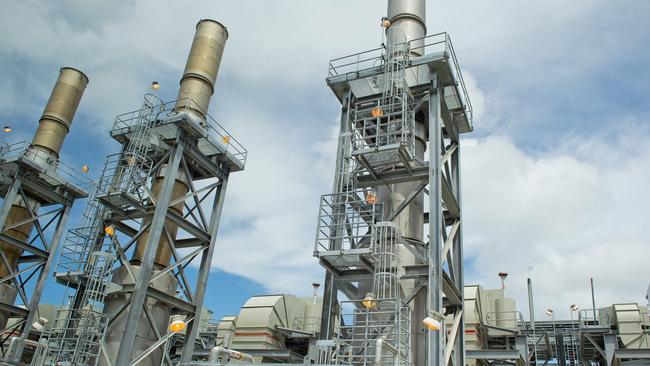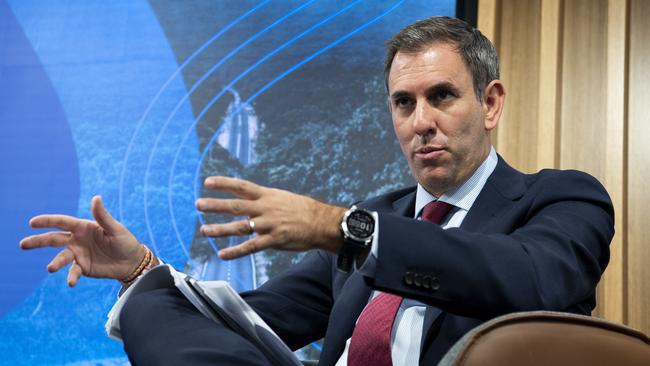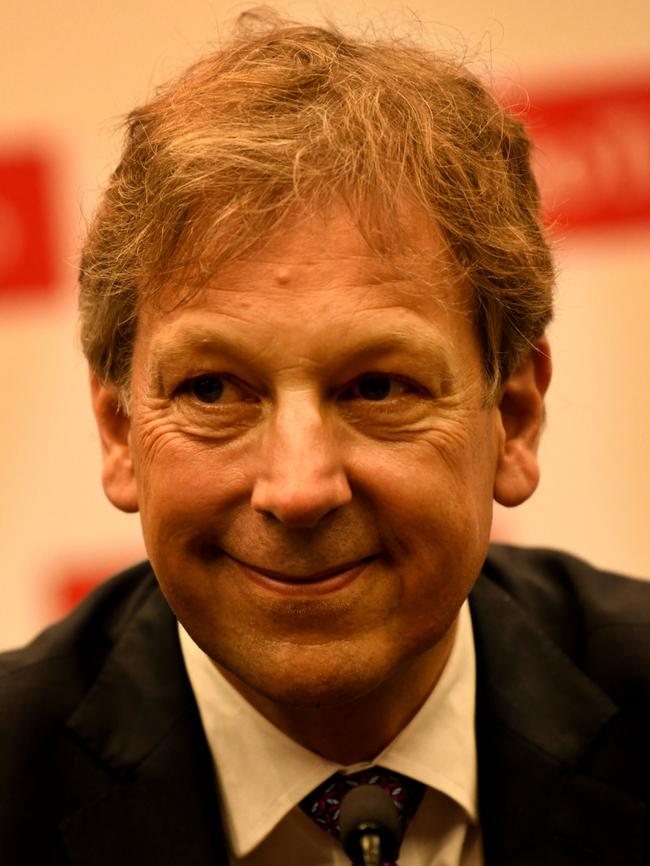Keeping gas prices down to test Canberra’s limits
ACCC boss Gina Cass-Gottlieb has put big gas players on notice to get a move on and break the supply stalemate with customers.
Business
Don't miss out on the headlines from Business. Followed categories will be added to My News.
Gas producers have little room to move over the coming year as the competition regulator attempts to put price caps onto a market that is moving largely because of forces outside of Australia’s control.
Australian Competition and Consumer Commission chairman Gina Cass-Gottlieb has put big gas on notice to get a move on and break the supply stalemate with customers now that they have the full details of how the price caps are expected to work.
Nor is she buying the line that producers are suddenly short of uncontracted gas in the domestic market.
“We would start with a position of scepticism that there is insufficient gas to supply,” Cass-Gottlieb says in an interview.
“On all the forecasts we’ve received from producers, there should be sufficient uncontracted gas – in fact, more than sufficient – to meet the shortfall in supply to domestic users,” she says.

The regulator on Tuesday released the rules of the game and the fine print that gas producers need to follow from the Albanese Government’s “emergency” intervention which limits pricing to $12 per gigajoule. This includes practical measures including whether the gas cap covers transport costs, take or pay arrangements and contracts that have traditionally been linked to other markets, such as Brent crude. The answer to all of these points comes back to the same principle: stick to the price cap.
Now that producers have the details they should enter into deals in good faith and under the intent of the price cap, she says.
“We now expect that there is sufficient guidance, and because there is available gas, there should be negotiations occurring, taking account of this guidance and complying with the cap”.
The ACCC has also reminded producers what is at stake. For those breaching the cap they could be among the first to be hit with the super-sized set of fines only signed off in October.
This could mean either the higher number of $50m; three times the value of the benefit obtained; or 30 per cent of the company’s annual Australian revenue.
Since the caps were rushed through shortly before Christmas producers were dragging their feet on entering into new deals without details such as transport costs and contracts that have been based around oil prices.
Cass-Gottlieb says the $12 figure is a “hard ceiling” but has given producers some reprieve by allowing for some variability pricing for seasonal peaks in demand.
Here it may be common for big gas users to have the ability to surge or increase the daily quantities of gas received during winter months. Under normal contracts this comes at a premium. The ACCC is prepared to allow this to happen although it expects the weighted average price will be no greater than $12 over the life of the contract.
The regular will also be on the lookout for “below the line costs” that for example means substantially higher charges for a variation in supply than existed before the price caps were introduced.
Indeed this will be a major focus for the ACCC enforcement team where there are signs of deliberate avoidance behaviour because of the cap.

APPEA, the industry body for the gas producers, says it is reviewing the details released by the regulator.
“We want to ensure supply for our customers. But with fines of up to $50m possible, we want to also ensure we are complying with these rules that … are still being defined by the government,” said APPEA chief executive Samantha McCulloch.
The fact is Albanese Government’s emergency intervention into the gas market will put the credibility of one of their most powerful financial regulars on the line to make sure that prices for uncontracted gas quickly falls to below the $12 cap and stay there without the market being disrupted. The regulator has been given an extra $12.5m in funding to build out its new role as the energy market cop.
While global energy prices have been rapidly pulling back from their highs seen at the start of Russia’s invasion of Ukraine, helped by a mild winter in both Europe and the US, prices for delivery into Asia are currently pitched around $27-$29 a gigajoule showing just how much work needs to be done and to monitor for leakage of uncontracted gas into spot exports markets.
The figures compiled by the ACCC shows that on average an offer for uncontracted gas in the year before Russia’s invasion of Ukraine came in at $9.20 a gigajoule so the cap still gives room for producers to profit under normal circumstances. Gas producers have dismissed this arguing point in time pricing can’t determine a market that needs certainty of long term investment. By this time next year we will know who is right.
Rio’s cost call
Jakob Stausholm’s Rio Tinto has set the tone for corporate Australia with the December quarter likely to be the pressure point for surging costs, after the global miner was unable to hold back the pressure.
The challenge this year – not just for Rio – but all companies, will be to navigate the way through the costs puzzle. The risk is that costs seen to creeping in over the past year from higher wages to fixed costs could become baked in to the bottom line for the long term.
In a high inflation environment, it’s easy for a CEO to wave the white flag on costs, but those companies actively tackling the cost line will soon find themselves rewarded by the market.
A combination of inflation, diesel prices and labour costs during the quarter pushed Rio’s Pilbara iron ore costs above US$21 a tonne, breaking the top end of the guidance range that was given in October. It warned costs for next year could push higher and forecast between $US21 and $US22.5 a tonne mark.

While rival Pilbara producers BHP and Fortescue are yet to detail their own December quarter numbers, inflation means Rio is falling further behind the pack despite its promise to get back in the race on iron ore costs. Even so, Rio’s cost performance from its fourth quarter production update cast a shadow on its two rivals.
Rio also slightly lowered its assumption on the level of the Australian dollar to US70c from US71c, which technically gives it even more headroom on costs given its local expenses including wages are paid in Australian dollars. This time a year ago, it was assuming an Australian dollar of US75c in its estimates, showing just how much cost pressures have been building.
New mine
The ramping up of Rio’s new $US3bn ($4.3bn)-plus Gudai-Darri mine in the Pilbara made all the difference. Rio managed to hit the very bottom end of its shipments target with a full calendar year rate of 321.6Mt.
At full capacity, expected to be reached this year, the new mine will produce 43 million tonnes of iron ore annually. Rio is betting a combination of lower mining costs and higher quality ore will help the overall performance of the iron or division.
Meanwhile, Rio was sounding a cautiously optimistic tone in its global assessment noting the China continues to provide support to the global economy, although the end to the zero-Covid-19 policy last month will cause some short term volatility. China reopening trade was also supporting demand for iron ore, with prices ending the quarter well up on the third quarter.
Rio was more upbeat on the US economy than three months ago, noting it had been more resilient than previously thought. The eurozone was still troubled, although the prospect of a winter energy crisis seemed to be passing. Rio was still bullish on the long term outlook for lithium, despite some short term slowing in the electric vehicle market while interest rates are rising.
Stausholm’s $US3.1bn move to buy out the Turquoise Hill exposure to Oyu Tolgoi copper mine in Mongolia during the quarter allowed Rio Tinto to boost its copper production guidance to between 600-655 thousand tonnes, just as the price of the metal is fast recovering.
johnstone@theaustralian.com.au
More Coverage
Originally published as Keeping gas prices down to test Canberra’s limits





